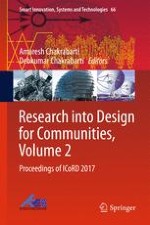2017 | OriginalPaper | Chapter
‘What Ideality Tool’ (WIT) for Product Design Briefs
Transitioning from a Static Flowchart to a Dynamic Automation Tool
Authors : Alon Weiss, Iko avital, A. K. Das, Mazor Gedalya, Pratul Ch. Kalita
Published in: Research into Design for Communities, Volume 2
Publisher: Springer Singapore
Activate our intelligent search to find suitable subject content or patents.
Select sections of text to find matching patents with Artificial Intelligence. powered by
Select sections of text to find additional relevant content using AI-assisted search. powered by
